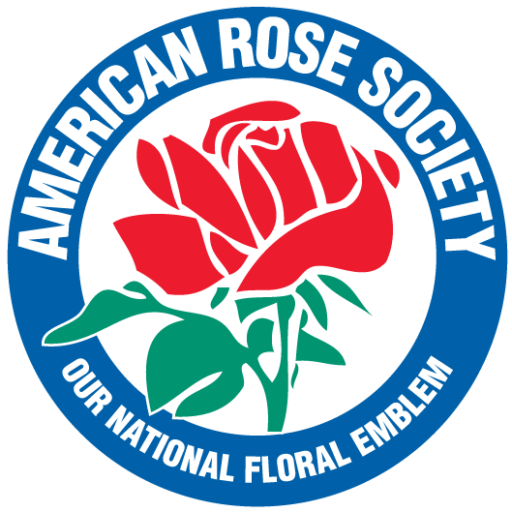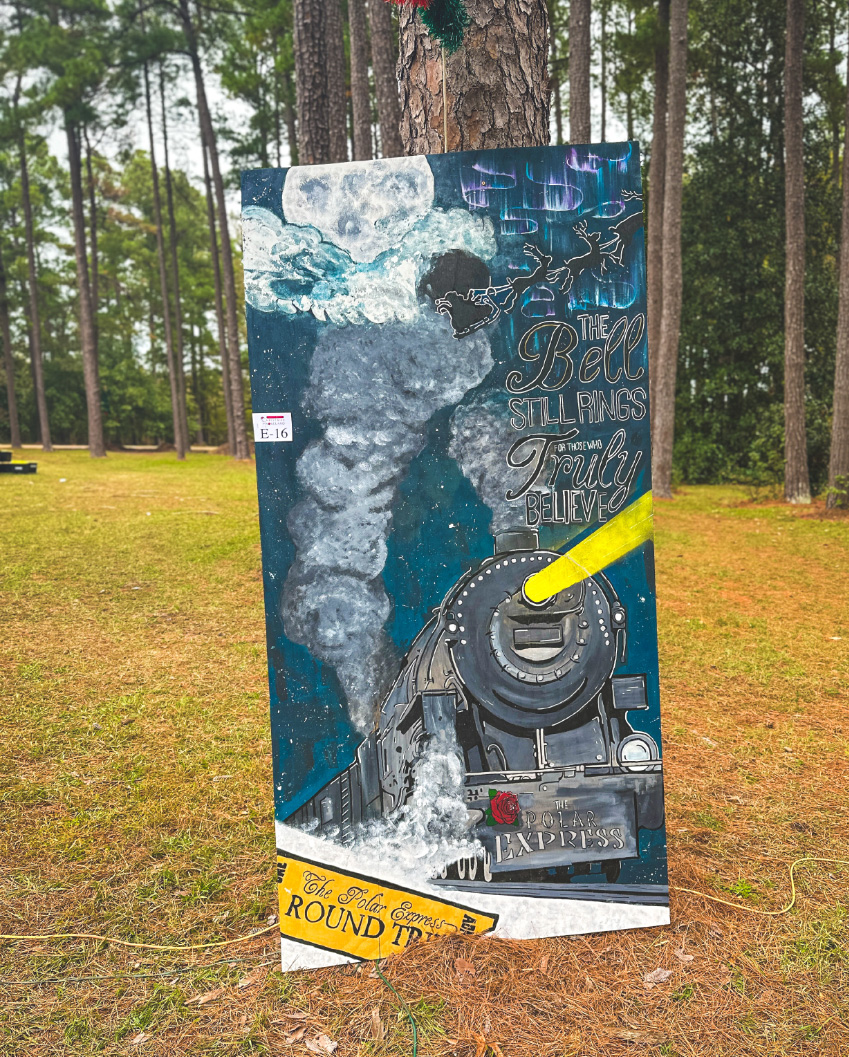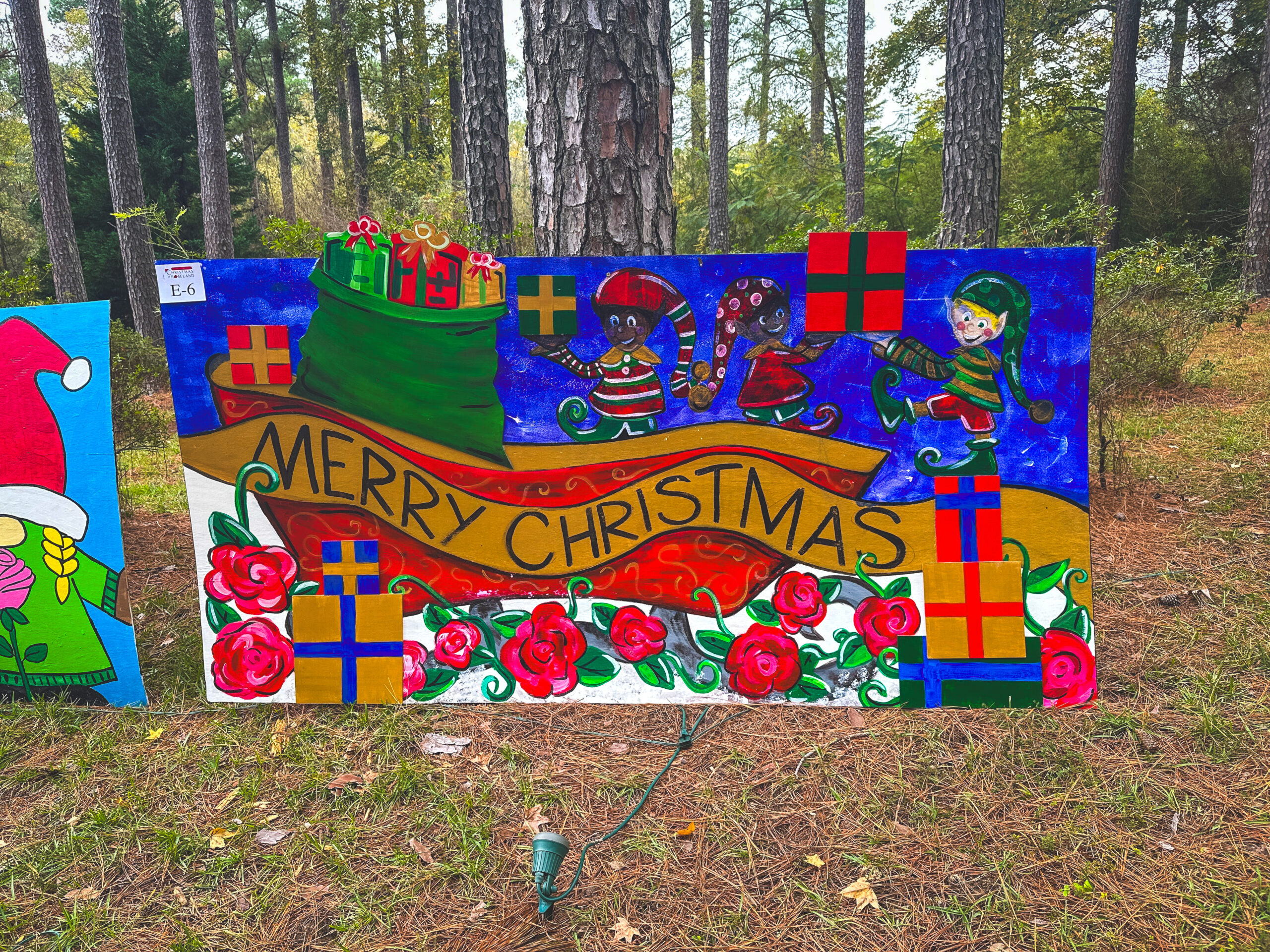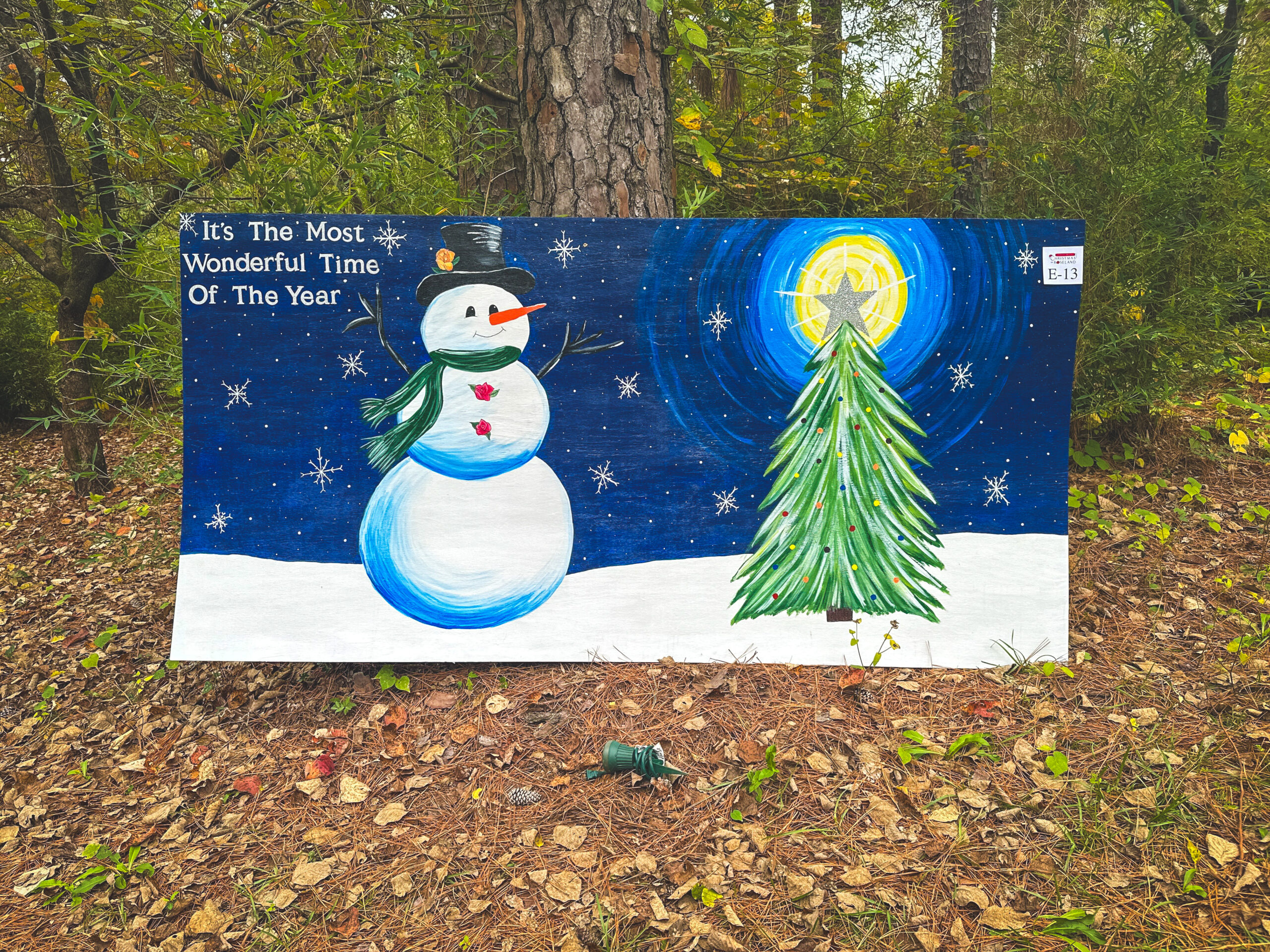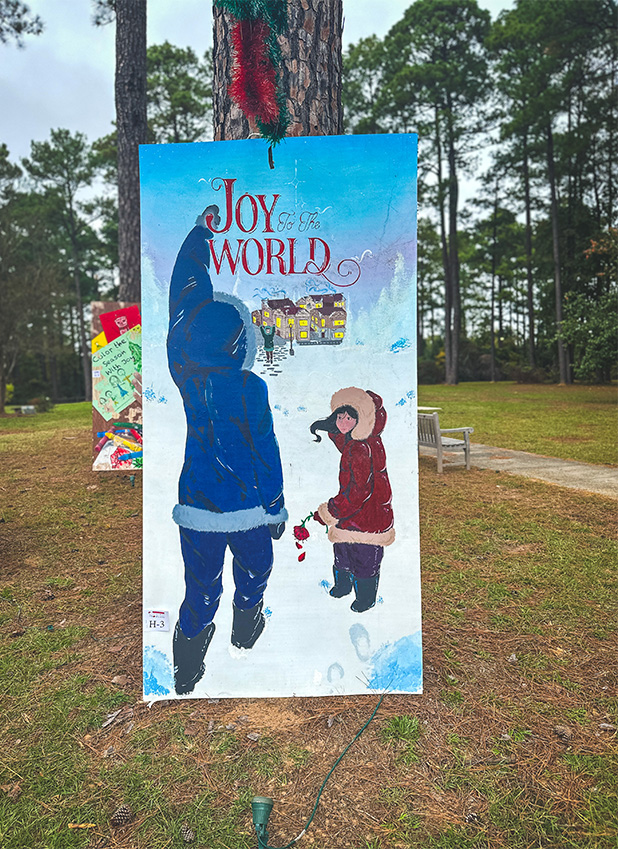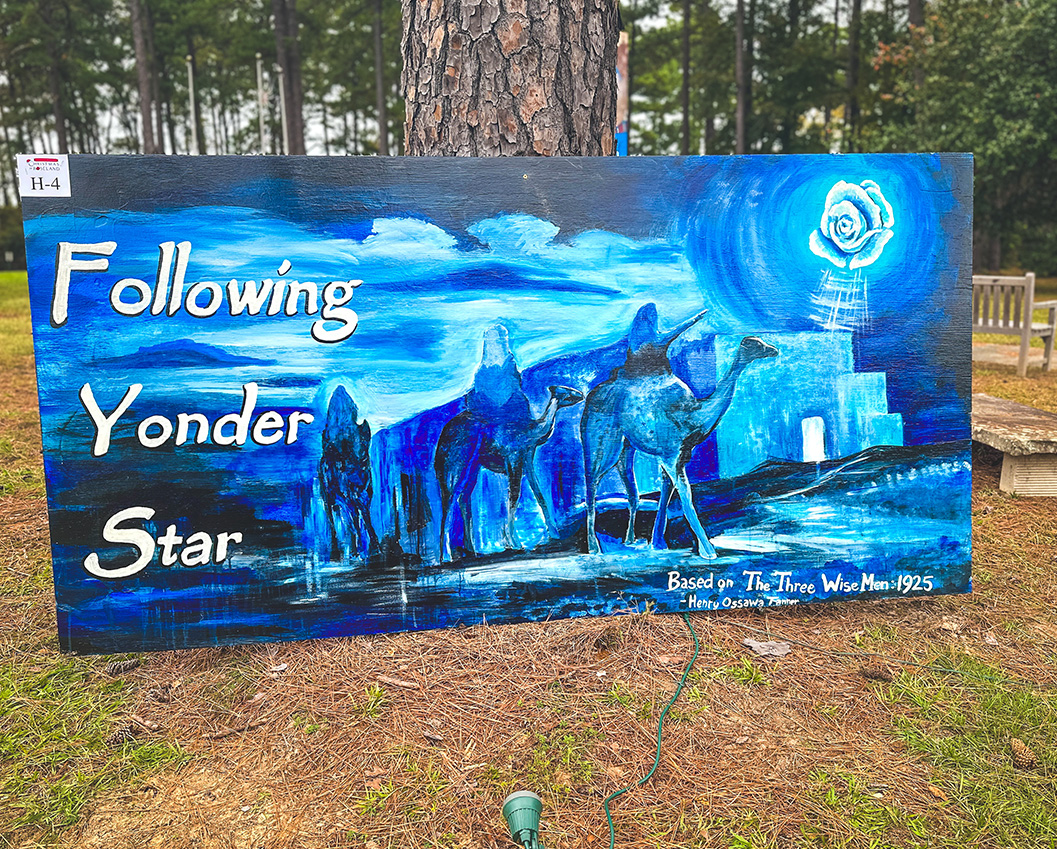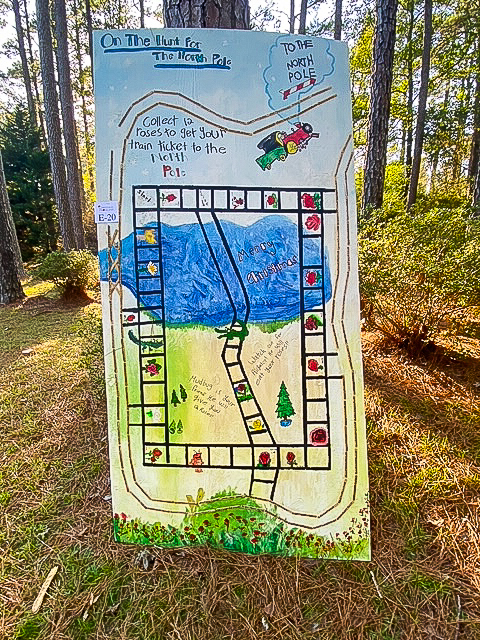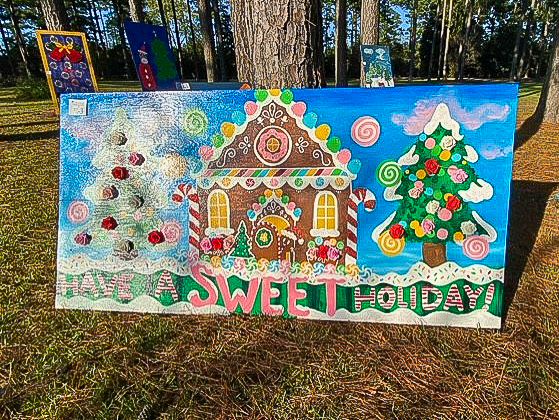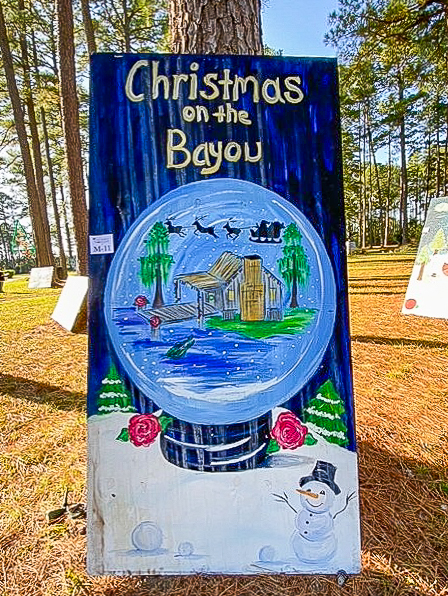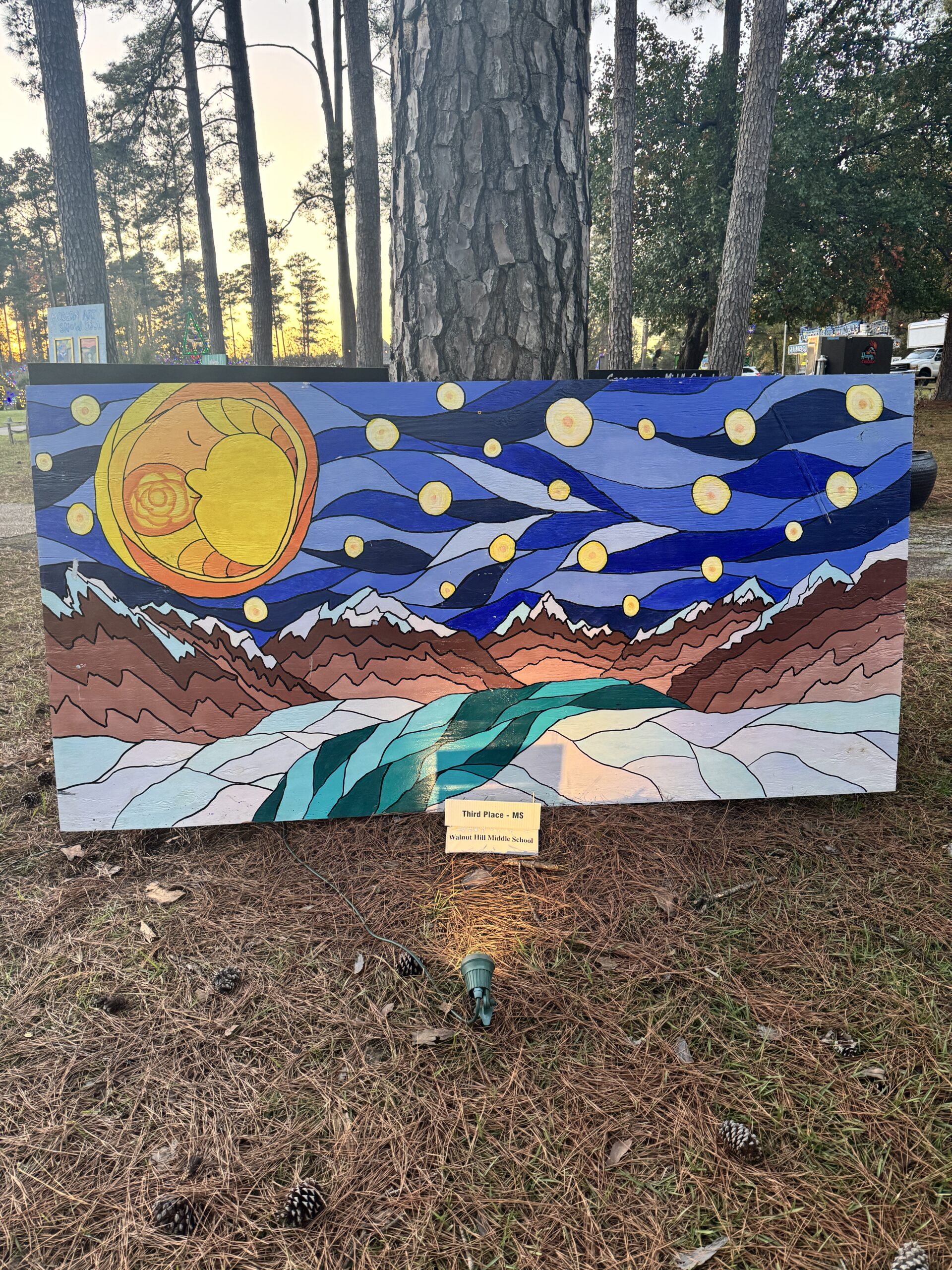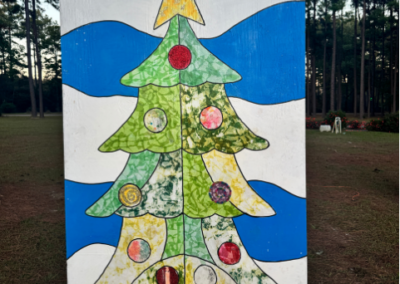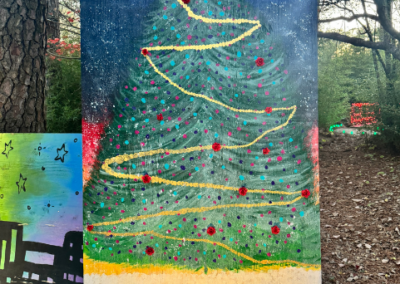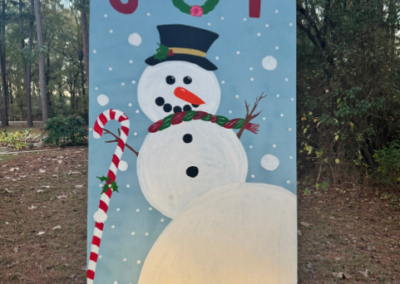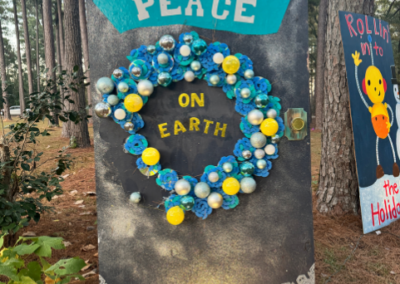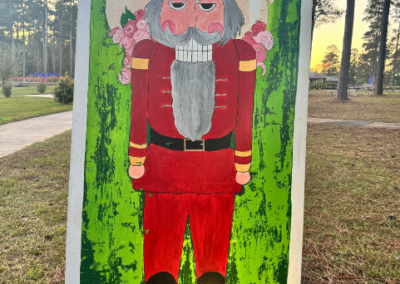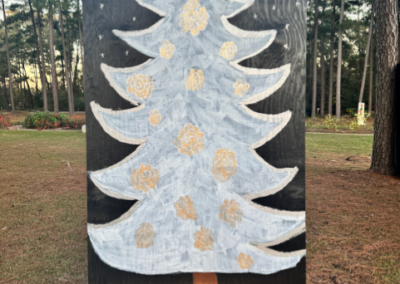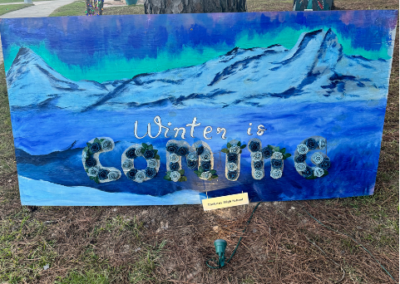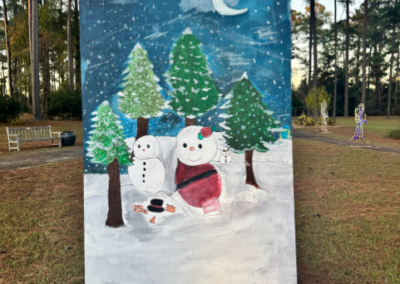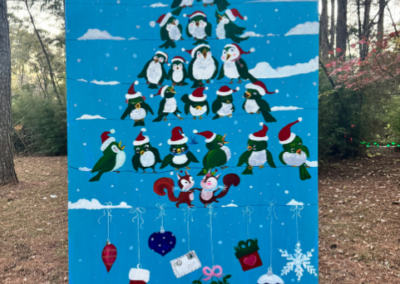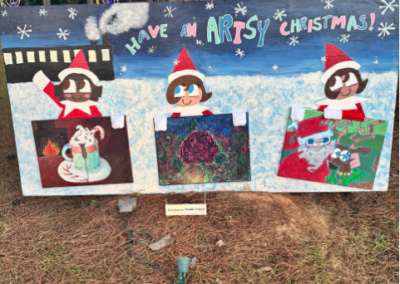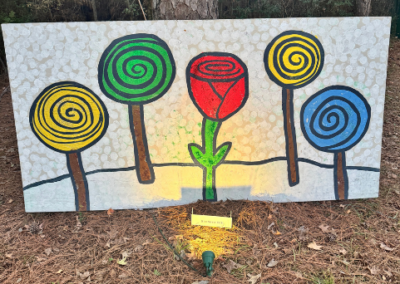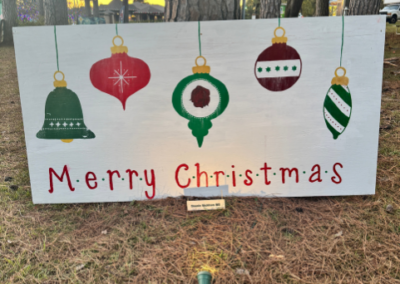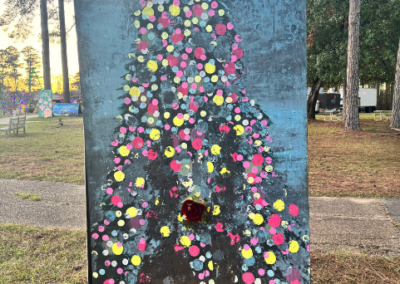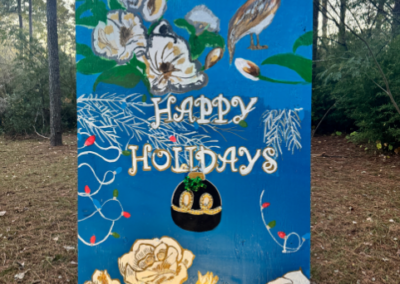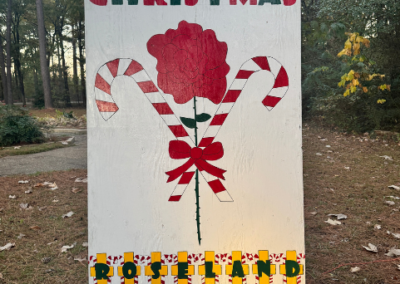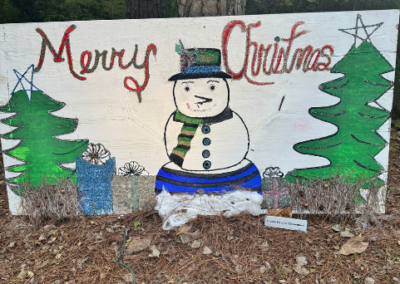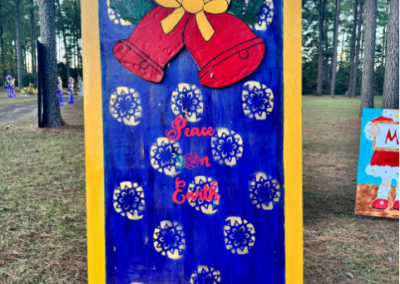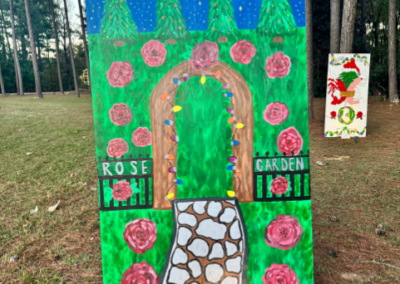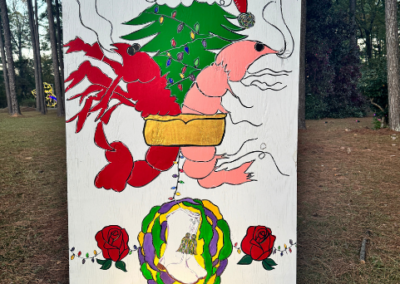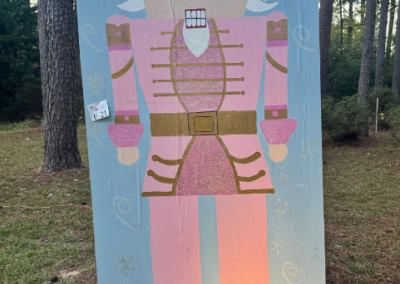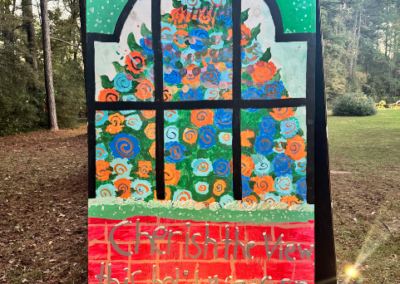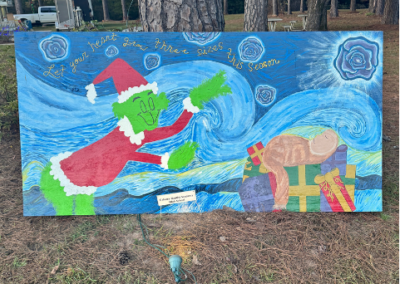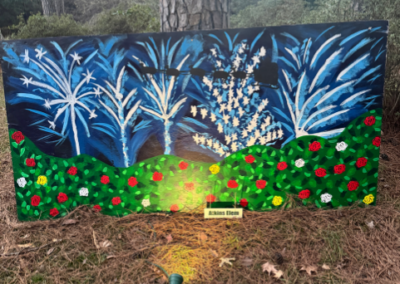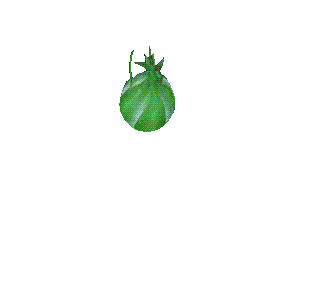by Jeff Wyckoff, ARS past president
This is a 2020 AOM article and was written for a PNW publication
Roses are like people in that they are subject to a number of ailments and diseases. Some of these are temporary, some are persistent. Some are curable, others are not. Some are viral, some are bacterial, some are fungal. Whatever the case and the cause, it helps to have some knowledge of them, to be able to recognize their respective symptoms, and to know what, if anything, you can do about them.
As Seattle’s spring bring us changeable weather, the foliage on our roses often does weird things, changing colors, shriveling, dropping, all of which lead us to think that some dreaded pathogen has invaded our garden. Serious diseases seldom manifest themselves in the spring, so panic is premature. ARS Consulting Rosarians can usually tell you what the trouble with your leaves is not, rather than what it is. The best advice is probably to prune out the offending foliage and then monitor the plant carefully to see if the problem recurs or spreads.
Possibly the most widespread rose “disease” and the easiest to cure is mineral deficiency. In addition to the “big three” – nitrogen, phosphorous, and potassium – roses also need small amounts of so-called “micro-nutrients”, calcium, magnesium, sulfur, boron, zinc, copper, manganese and iron. These are often, but not always, included in both organic and chemical fertilizers, but you should read the label to confirm. Rather than trying to diagnose which mineral might be missing from your roses’ diet, I would suggest using a combination product, usually labeled “trace elements”, which are now widely available both online and off.
Our next disease is easier to recognizes and identify – most of the time. This is crown gall, caused by a bacteria, specifically Agrobacterium tumefaciens. This typically appears on the crown/bud union of a plant, but may also manifest itself on the roots, or, as in the accompanying image, on the canes. These galls are generally caused by infections in the soil getting into cuts in the roots or lower canes. There is no cure for crown gall; once it gains access it infects the whole plant, and may be spread by untreated pruners or other tools. In a worst case scenario it saps the energy of the plant, which then gradually goes downhill.
However, all is not lost. Many rosarians have managed to keep the disease at bay by removing the gall and treating the infected area with a bleach solution. A more stringent regimen is recommended by an online source: “Remove the infested plant and prune out gall tissue. Soak the entire root system and damaged areas for 15 minutes in a solution of 2 level Tbsp of Actinovate [active ingredient: Streptomyces lydicus] per 2-1/2 gallons of water.”
But wait! There’s even better news. I have had crown gall on two roses for over 15 years, and both are still going and growing strong, so don’t be too quick to dispose of an infected plant, as some rosarians suggest. Wait until it’s obvious that the bush is going downhill before removing it.
Let’s digress here for a moment and consider what I would call the “language of pesticides” as it relates to roses. First of all, any pesticidal product, whether homemade or commercial, organic or chemical, an insecticide, fungicide, or miticide, has one of two modes of action: contact, which covers the foliage at the time of spraying but does not enter and remain in the entire plant, and systemic, which does. Both have advantages and disadvantages; most organic products are contact in nature.
Commercial pesticide manufacturers use a wide array of verbs to describe their products in their advertizing and promotion. Three of these frequently found are prevent, control, eradicate. “Prevention” is clear; it is the first line of defense in disease control, spraying or treating your plants before they show signs of disease. “Eradication” means complete removal and is possible with some pathogens and will be discussed later. “Control” however, is a very relative term. Does it mean preventing it from spreading, keeping it at an “acceptable” level, or just a word they use because you can’t define or explain it with regard to plant health?
A promotional blurb for Garden Safe [Organic] Fungicide 3 states: “Controls rust, powdery mildew, spider mites and listed insects”. The active ingredient in Fungicide 3 is Neem oil, not just ordinary Neem oil but “Clarified Hydrophobic Extract of Neem Oil”. The National Pesticides Information Center says of this product: “Azadirachtin is the most active component for repelling and killing pests and can be extracted from neem oil. The portion left over is called clarified hydrophobic neem oil.” Control indeed! The overriding messages here are “check the active ingredients” and “let the buyer beware”!
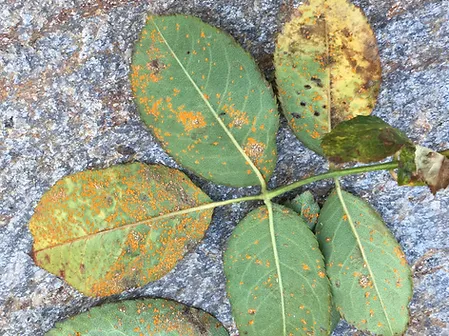
Rust is one of the least pernicious diseases we encounter on our roses. For one thing, it seems to be selective, targeting certain varieties – often repeatedly – but not others. Secondly, I have not found it to be contagious, certainly not to the extent of black spot. In the Pacific Northwest it does not present long term harm to the plant by causing leaf drop or foliage deformity. And finally, it characteristically occurs on the bottom side of the leaves, so you can ignore it if you choose. Rust is caused by a fungus, Phragmidium tuberculatum, and can be treated with any number of chemical fungicides that may not eradicate it but will keep it from spreading.
This look may be desirable on your dieffenbachia but not on your roses. It is a viral pathogen known as Rose Mosaic Virus. It is similar to, but not necessarily caused by, Prunus Necrotic Ringspot Virus and Apple Mosaic Virus, two diseases of stone fruit. The variegation and discoloration may look different on different leaves and different roses, but the chlorotic banding should still be recognizable. This virus is spread through infected rootstock, and about 20 years ago it was rather prevalent. Since then the big nurseries have cleaned up their understock and had their infected varieties heat treated, so it is much less in evidence today.
Much like crown gall it may or may not affect the health of the plant, and is not contagious. There is no cure or treatment for rose mosaic virus.
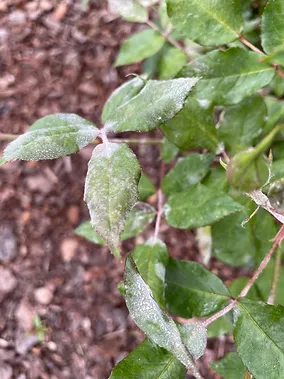
Powdery Mildew is a fungal disease that affects many different types of plants. It seems to thrive in moist, humid conditions like we get in late summer and autumn. It will curl and deform the foliage which can lead to reduced photosynthesis if left untreated. It is very easy to identify, and hence its chief drawback may be the unsightly look it gives to your rose garden. A number of rosarians have reported success using neem oil on powdery mildew. Colorado State University Extension Service recommends the use of potassium bicarbonate, an organic product with proven effectiveness, and then moving up to a chemical product like Triforene if necessary.
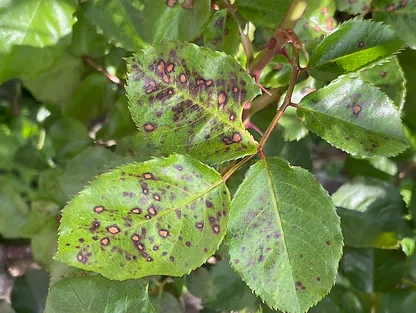
At least three rose diseases manifest themselves through spots on the leaves: black spot and downy mildew, both of which will be discussed later, and anthracnose. Anthracnose is caused by the fungus Sphaceloma rosarum and is most often seen during cool and moist weather of spring and autumn. In contrast to black spot, anthracnose spots tend to be rounder and, as they age, develop a white center. Like most of the “lesser” rose diseases discussed previously, anthracnose can be prevented with a chemical fungicide and possible an organic one like neem oil.
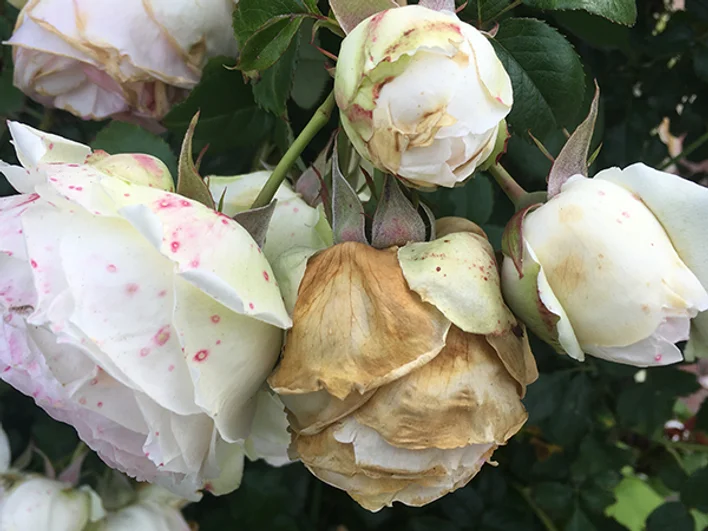
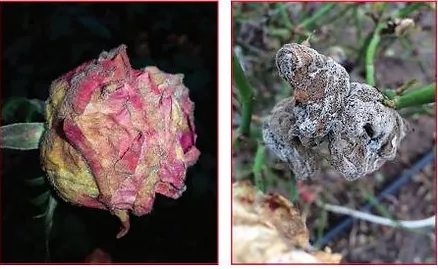
Botrytis (LEFT, photo by Texas A&M Agrilife Extension), sometimes known as gray mold, is primarily a disease of grapes and other food crops, but the fungus, botrytis cinerea, does show up on roses. It characteristically appears on petals and buds as large, rotten-looking brown spots that soon develop into gray mold. It is fostered by cool wet conditions so air circulation and proper irrigation techniques are encouraged. There is no cure for botrytis and the disease can spread so affected plants should be removed. Texas A&M Agrilife Extension recommends preventive organic fungicides such as Actinovate or PlantShield and chemical products like Daconil or Medallion. Another source says that Aliette is effective against botrytis.
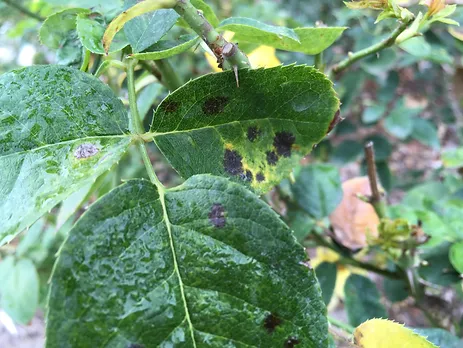
We come now to the first of the “big three” of rose diseases, those that can cause serious and permanent harm to your plants. Black spot is the bane of rose growers throughout the United States in damp climates like ours. Dr. David Slezak of the University of Wisconsin estimates that there are c. a dozen strains or “races” of black spot, all of which can migrate, mutate, and build up resistance to fungicides. We can fight black spot and hopefully keep it at bay, but we can never eliminate it from our environment. I’m sure we’ve all had it at one time or another, so there should be no problem recognizing it. The fungus, Diplocarpon rosae, produces spores that can overwinter on the soil and the rose plants and then come to life in our wet springs.
The leaf drop caused by black spot reduces a plant’s ability to photosynthesize food. If left untreated over time it will weaken the bush and cause the decline of rose production. There are a variety of ways to prevent and to treat black spot. A few of them include:
-
Purchase disease resistant varieties. Talk to a Consulting Rosarian, a garden supervisor, other knowledgeable experience rose growers or try online sources.
-
Avoid wetting the foliage. Black spot thrives on ambient water, from above and below. We can’t stop the rain, but we can control our watering methods and systems.
-
Use a fungicide! The best way to combat black spot is to prevent it. If I were to choose an organic product it would probably be potassium bicarbonate, which is fairly widely available. There are dozens homemade recipes on the web using sodium bicarbonate – baking soda – and some of these may work for you.
-
Any number of chemical fungicides, if used regularly, will prevent black spot. It is recommended that you alternate a contact product with a systemic one to avoid a buildup of resistance.
-
To eradicate black spot (at least temporarily) spray every couple days with a chemical fungicide. This should break the reproductive cycle of the fungus spores.
Since the disease is characteristically already in the plant when you buy it, preventive spraying is pretty much useless. The only known fungicidal product known to work against downy is Fosetyl-Al, most commonly sold under the trade name Aliette, but also available in Monterey Garden Phos, containing potassium salts of phosphorous acid which are a component of Fosetyl-Al. Defense against downy mildew would include careful monitoring during periods of high humidity, removing infected plants as quickly as possible, and having a supplier of Aliette on overnight delivery.
Much on the minds of rose breeders, the academic community, rose growers of all stripes and the gardening press of late is RRD, Rose Rosette Disease. There is no preventative, treatment, or cure for RRD and it is devastating private and public gardens in the eastern two-thirds of the United States. The virus is a member of the emaraviradae family and its only known vector is the eriophyid mite, Phyllocoptes fructiphilus, a minuscule creature that, according to Utah State “cannot be seen without a 20x hand lens or greater magnification”. They are small enough to be carried by the wind, and can also move from to plant on their own. As with all rose diseases, RRD’s symptoms appear as noticeable changes in the plant’s foliage. Here the leaves become deformed, crinkled, and brittle in a witches broom proliferation of small shoots, characteristically red in color. The plant will stop producing blooms and gradually go downhill.
Now for some good news. No cases of RRD have been found in either Oregon or Washington; all purported appearances of the disease have been discredited and found primarily to be herbicide damage. Rose Rosette Disease now has its own website, https://roserosette.org/ complete with a reporting system for suspected occurrences and a distribution map showing outbreak locations. In addition, there are experts available to visit a garden and confirm or disconfirm any suspected sighting.
An article by Dr. Tony Liberta in the 1994 ARS Annual warned of the dangers of RRD and concluded with these words: It appears now that the scientific and rose growing communities have become sufficiently aware of the threat posed by RRD to prevent the “epidemic” that might have developed had it gone unheeded.” Unfortunately this warning went pretty much unheeded for the next 20 years. Roserosette.org states: “This disease has been reported since the early 1940s but only in 2011 did research demonstrate that it is caused by a virus, aptly named the Rose Rosette Virus (RRV). Diagnosis of RRD prior to 2011 was primarily done based on observed symptoms and the presence of the eriophyid mite that is believed to be the vector of RRV.” This appears to be somewhat disingenuous. Why would the lack of knowledge of a viral (or other) pathogen have seemingly slowed academic research rather than accelerated it? As for the commercial rose industry, they are purportedly experimentally breeding with a number of species varieties in order to come up with new varieties that are resistant to RRD, despite the report from roserosette.org that all roses are believed to be susceptible on some level to the disease.
It would seem that a more promising approach would be to develop an effective preventative miticide. At this time a number of such products have shown “limited effect” against the eriophyid mite, to include Avid© (abamectin active ingredient) Talstar© (bifentrhin), Sevin© (carbaryl), and petroleum-based horticultural oils. If RRD were to creep into Washington I think that an immediate and continued rotation of a couple of these would be advisable unless a better product were to come along.
Abamectin, bifentrhin, carbaryl, who knows anything about these chemicals? Are they safe for humans, pets, aquatic life, benign insects, etc.? To find out, I recommend that you consult the Pesticide Action Network (PAN) data base here wherein every pesticidal product in the United States is cross-referenced to its chemical active ingredient(s), and every chemical is analyzed according to multiple levels of safety and toxicity. Chemical pesticides can work, but their uninformed use can be dangerous.
All photos by Rita Perwich unless specified otherwise.
